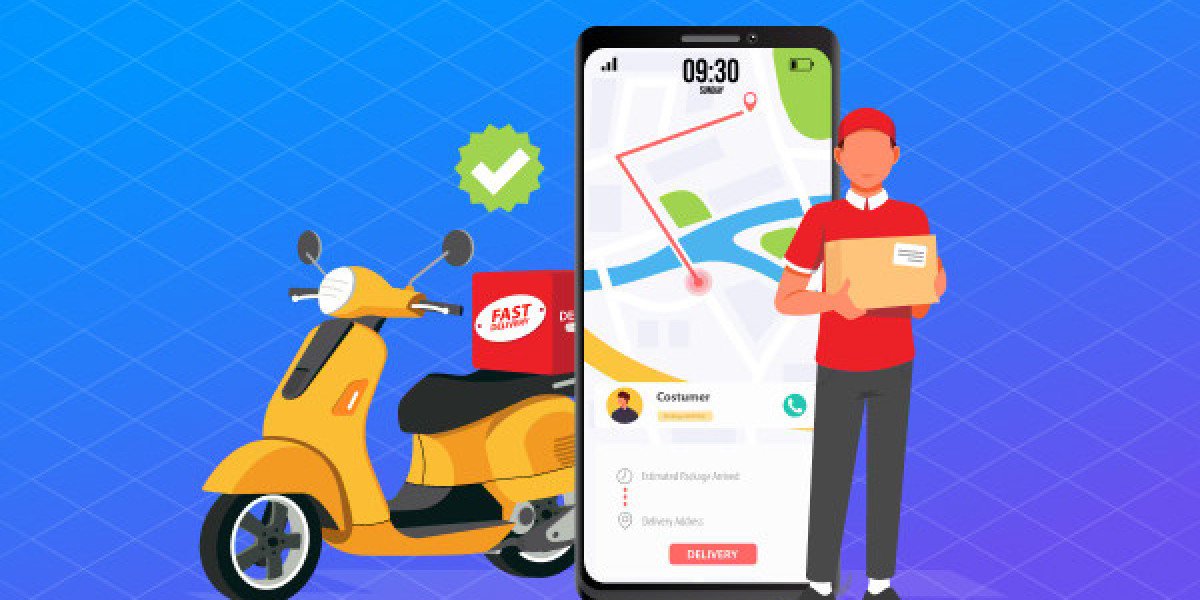Introduction
The food delivery app market has experienced tremendous growth in recent years, driven by the increasing demand for convenience and fast-paced lifestyles. With the rise of smartphones and mobile connectivity, consumers now have the ability to order food from their favorite restaurants with just a few taps on their screens. In this article, we will delve into the trends, opportunities, and challenges in food delivery app development, providing valuable insights for businesses and entrepreneurs looking to enter or expand in this dynamic industry.
Trends in the Food Delivery App Market
Shift towards Online Ordering
Consumers are increasingly embracing the convenience of online food ordering. The ease of browsing through menus, placing orders, and making payments through food delivery apps has transformed the way people order food. This trend is expected to continue as more customers prefer the convenience of having their favorite meals delivered to their doorsteps.
Integration of Delivery Services
Food delivery apps are not just acting as a platform for ordering food; they are also integrating their own delivery services or partnering with third-party logistics providers. This integration allows for a seamless end-to-end experience, ensuring efficient and reliable delivery. By offering their own delivery fleet, apps can have better control over the delivery process and enhance customer satisfaction.
Personalization and Recommendation Engines
To enhance user experiences and drive customer loyalty, food delivery apps are leveraging personalization and recommendation engines. By analyzing user preferences, order history, and behavior patterns, these apps can provide tailored recommendations and offers, creating a more personalized and engaging ordering experience.
Embracing Emerging Technologies
Food delivery apps are exploring emerging technologies such as artificial intelligence (AI) and machine learning (ML) to optimize operations and improve customer experiences. AI-powered chatbots and voice assistants are being used to enhance customer support, while ML algorithms are employed to predict delivery times accurately and optimize delivery routes, reducing wait times and increasing efficiency.
Opportunities in the Food Delivery App Market
Expansion to Untapped Markets
While food delivery apps have gained significant traction in urban areas, there are still vast untapped markets in suburban and rural regions. Expanding operations to these areas presents an excellent opportunity for food delivery apps to reach new customers and capture a larger market share.
Partnerships with Restaurants and Cloud Kitchens
Collaborating with a wide range of restaurants, including local eateries and popular chains, can help food delivery apps expand their offerings and cater to diverse customer preferences. Additionally, partnering with cloud kitchens, which exclusively prepare food for delivery, can provide a cost-effective solution for expanding the app's delivery radius without the need for physical restaurant spaces.
Integration of Contactless Delivery
The COVID-19 pandemic has accelerated the adoption of contactless delivery methods. Food delivery apps can capitalize on this trend by offering contactless delivery options, ensuring the safety and peace of mind of their customers. Implementing features like contactless payments and delivery instructions can enhance the overall customer experience and attract safety-conscious consumers.
Challenges in the Food Delivery App Market
Intense Competition
The food delivery app market is highly competitive, with numerous players vying for market share. Established players and new entrants constantly strive to differentiate themselves by offering unique features, competitive pricing, and a wide range of restaurant partnerships. To succeed, food delivery apps must continuously innovate and deliver exceptional customer experiences.
Operational Efficiency
Maintaining operational efficiency while dealing with a large volume of orders and deliveries can be challenging. Timely delivery, order accuracy, and maintaining food quality during transportation are crucial factors that can impact customer satisfaction. Food delivery apps must invest in robust logistics management systems, efficient order processing, and effective communication channels with restaurants and delivery partners to overcome these challenges.
Customer Retention and Loyalty
Building customer loyalty is essential in the food delivery app market. With low switching costs and a plethora of options available, retaining customers can be a significant challenge. Offering rewards programs, discounts, personalized recommendations, and excellent customer support can help foster loyalty and encourage repeat orders.
Conclusion
The food delivery app market is a dynamic and rapidly evolving industry with immense opportunities for growth. Understanding the latest trends and addressing the associated challenges can position food delivery apps for success. By leveraging online ordering, integrating delivery services, personalizing experiences, and embracing emerging technologies, food delivery apps can provide seamless, convenient, and engaging experiences to their customers while expanding their reach and capturing new markets.



